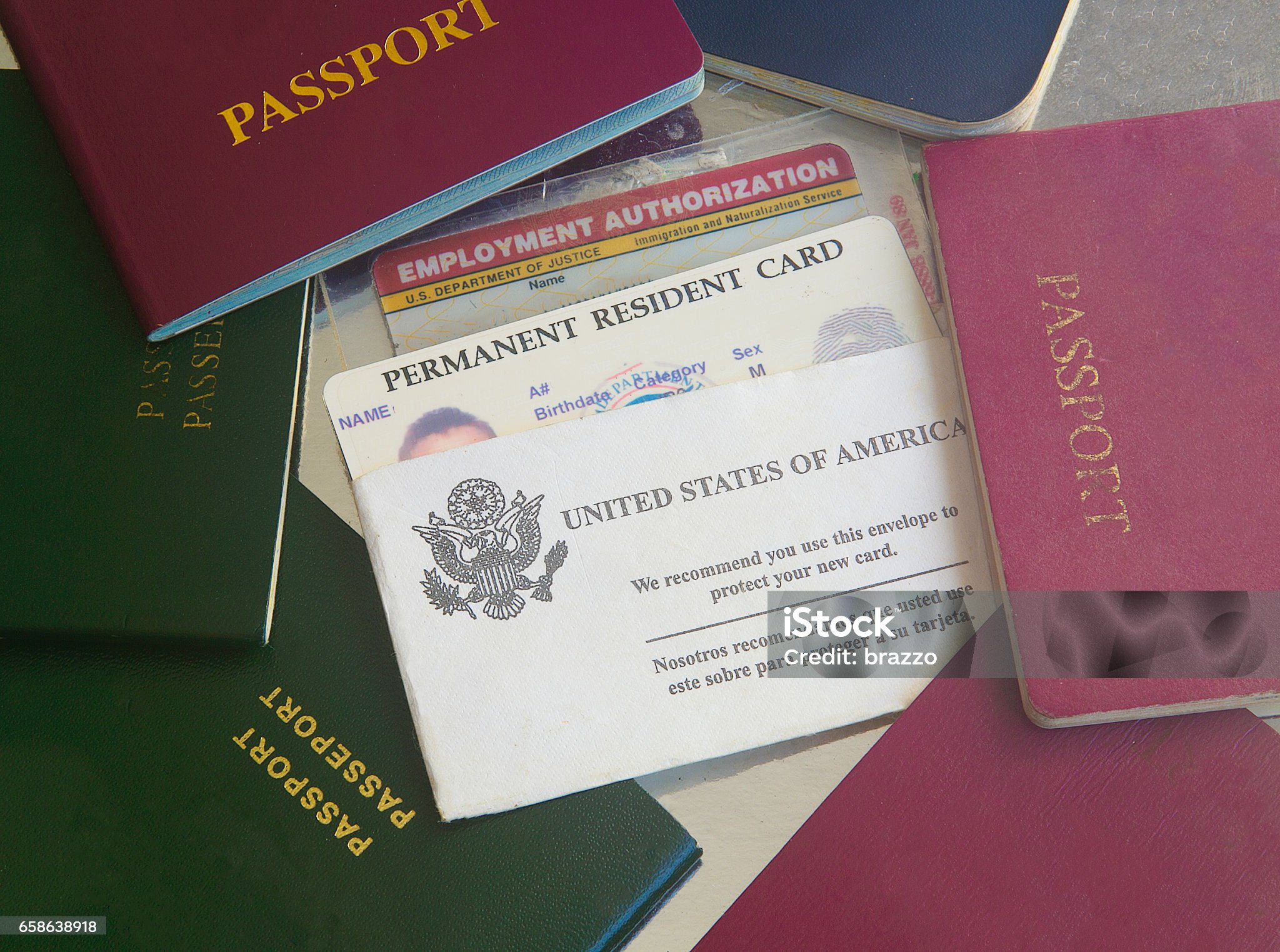In-Depth Review about Security Features in Secure ID Systems alongside Future Trends for Secure Transactions
In-Depth Review about Security Features in Secure ID Systems alongside Future Trends for Secure Transactions
Blog Article

1. Overview of Identification Documents
Personal identification documents are crucial for both individuals and society. They act as "permissions" and "access passes," allowing society to operate seamlessly when they are widely accessible and recognized. There are different kinds of identification documents, and each of them signifies a particular aspect. Take, for instance, a copyright, which authorizes one to operate a vehicle, and a copyright, which demonstrates citizenship and enables global travel. Such documents serve a vital personal function and are essential when handling contracts, such as for employment, services, insurance, or rentals. Often, financial institutions might require access to these forms of identification when dealing with borrowers who appear unreliable or have poor credit histories. Such identification acts both as an identification method and as legal clearance for various functions.
Identification documents have not always been an essential part of daily life, as they are today. The importance of these documents has grown alongside changes in security measures and legal requirements. Advances in information technology allow organizations to create highly secure systems that surpass the ID technologies accessible to the public. Many countries are in the process of standardizing their IDs with biometric technology. Some already utilize electronic exit systems.
Personal identification documents represent an individual's legal confirmation of identity. Globally recognized identification forms, such as passports, copyright, copyright, and driver's licenses, are accepted worldwide as proof of identity at both local and international scales. Many people store their identification documents securely under lock and key and can easily access them whenever needed.
In this discussion, we highlight the importance and authenticity of various documents, including IDP, Real ID, copyright, copyright, copyright, and resident permits, aiming to educate on their relevance. Both educators and the public should be familiar with these documents, as this information could prove valuable in safeguarding or recovering lost documents. This information is provided for both local and international audiences to make sure they have the most important documents for their needs and understanding.
2. Legal Structures and Rules Overseeing Identification Documents
The governance of identification documents is subject to varying laws and regulations across different jurisdictions. Documents are issued directly to individuals by an issuing authority and under specific guidelines and rules intended to keep the integrity and accuracy of the document. These documents can be compulsory in some cases and allowed as verification and/or validation in others. The individual is obligated to adhere to the regulations of the jurisdiction where the document will be utilized. In conclusion, individuals must comprehend the legal rules that pertain to their intended use of identification documents within any jurisdiction where they expect to act. Primarily, local and state government bodies regulate, issue, and control the use of certain identification documents for particular transactions.
The varying requirements of each jurisdiction and reasons for identification documents, however, can conflict with the need to travel and conduct business on an international level. It is, therefore, a global concern when people feel wholly alienated when they travel from one country to another and do not comprehend the rules and regulations regarding identification documents. While it is impractical to outline all the specific regulations from each country, it is crucial to recognize that with almost 200 nations and billions of people interacting, understanding the rules is important for global travel and commerce. Failure to follow these rules could lead to legal issues in another country, requiring adherence to international and reciprocal laws. Failure to comply with such rules may lead to both civil and criminal penalties for violating laws related to privacy, identity, commerce, trade, or even human rights.
The balancing of public policies with protected rights can be complicated when establishing security standards for identification in travel. That is, human rights may conflict with public policy on the tightest, most secure identification and documentation required to combat terrorism. In recent years, the introduction of digital mobile driver’s licenses has pushed countries to clarify or draft laws governing their usage, as technology in this area continues to advance. The next frontier for global travel may lie in the widespread use of digital identification documents. Even with the world moving toward mobile driver licenses, passports will likely remain necessary for some time to come. 
Both the standardization and evolution of digital IDs and mobile driver licenses are progressing as well. Take California as an example: roughly two years after the state passed its mobile copyright legislation, stakeholders are nearing agreement on the formal regulations for California's first mobile copyright.
3. Comparative Analysis of International Driver’s License, Real ID, copyright, copyright, copyright, and Resident Permit
The International Driver’s License acts as an identification document for those driving abroad The International Driver’s License was never developed by the UN or international organizations as a travel facilitation tool between countries.
The Real ID, is mainly used as a form of identification acceptable for boarding domestic flights, and functions alongside state driver’s licenses and ID cards that meet national standards. In addition to domestic travel, the Real ID can be used to enter federal sites and nuclear plants. However, the Real ID is not a travel document, copyright, visa, or resident permit. Even though some individuals could use it overseas for identification or birth date verification, its main function is for domestic travel within the United States.
In the United States, passports are recognized as a primary identification document, unlike other derived forms of ID. Passports are designed to protect citizens traveling internationally and to facilitate participation in non-mandatory diplomatic meetings or treaty discussions. This is the official, often administrative, use. The copyright also has, of course, a bureaucratic or private use. To travel internationally, or even regionally in some cases, travelers must not only possess a copyright but also adhere to various other regulations.
The copyright is an official document provided at birth, which is necessary to obtain passports and other types of identification. In comparison, a copyright and a copyright would seem to serve the same general purpose. However, a copyright offers continued benefits. Also, even if served in acquisition, the copyright never leads to the acquisition of a “second copyright”. It is irrelevant to the second copyright unless the traveler is planning to take on an illegal second nationality.
4. Security Elements and Fraud Prevention in Identification Documents
Various security features guard against counterfeiting, alteration, tampering, and fraudulent use. For example, many ID cards and documents include advanced features like holograms, layered images, and laser-etched designs. Some ID cards also incorporate RFID chips, which store digital images and biometric information to boost security.
Many security features are either hidden or semi-hidden, such as special inks, watermarks, or microtext. Such security features are put in place to make ID documents extremely hard to copyright or alter. 
Typically, the security level of an identification document is proportional to the level of trust it is expected to carry. For instance, a copyright may have less stringent security measures compared to a copyright, as it is mainly used within a country.
Advances in technology have driven the creation of more advanced security elements for ID documents. It is important to actively promote and adapt new security features and issuance practices whenever possible to stay ahead of potential counterfeiters and fraudsters.
Additionally, it’s vital to consistently evaluate both current and emerging security methods to ensure they remain effective. This ensures that these features stay ahead of evolving threats that could undermine document security.
A robust anti-fraud security system must focus on both proactive and reactive approaches to prevent fraud. Proactive measures can include workshops, public service announcements, educational outreach, and security conferences.
5. Summary and Future Developments in Identification Document Technology
This article examines the diverse forms of identification documents found around the world. It is important to see ID from both a technical perspective, considering security features, verification, and issuing authorities, but also from a legal regulatory point of view that would show the verification in courts where the document was used.
My research shows different attitudes to the way a good document might be and how the value of the verification tool is variable according to the circumstances of where the document should be used. Additionally, ethnography could illustrate how varying cultural perspectives influence the concept of an ideal identification document. Comparative work also provides insight into how the legitimacy of identification documents can vary even in countries resident permits with similar political, social, and economic systems.
Future trends in identification documents are rapidly evolving due to innovations in digital and technological fields. Digital technology is helping to advance the functionality and security of traditional documents such as eIDs, keeping pace with mobile phone trends. The main landmarks in this new convergence are biometrics and blockchain used as distributed ledgers.
Biometrics and its “liveness” function will collect the necessary biometric data during the direct correspondence between the person and the enrolling or verification authority, increasing the level of trust in the correct identity, excluding digital diversion of identity. This technology could transcend the scope of basic human rights as defined by international laws and constitutions. This access must remain as private as possible and the subject of consent.
The spread of digital identity can also lead to issues related to exclusion. Not everyone is able to easily obtain a digital identity. A so-called “identity gap” has emerged due to technological advances, which lead to unequal levels of access to identity verification across different parts of society.
Digital identity systems need to be systematically compared to traditional, physical identification documents. Besides verifying identities, digital identity systems also play a role in evaluating risk for a range of transactions. Further research is needed to examine how the rights associated with offline identification verification can be extended to digital identity scenarios.